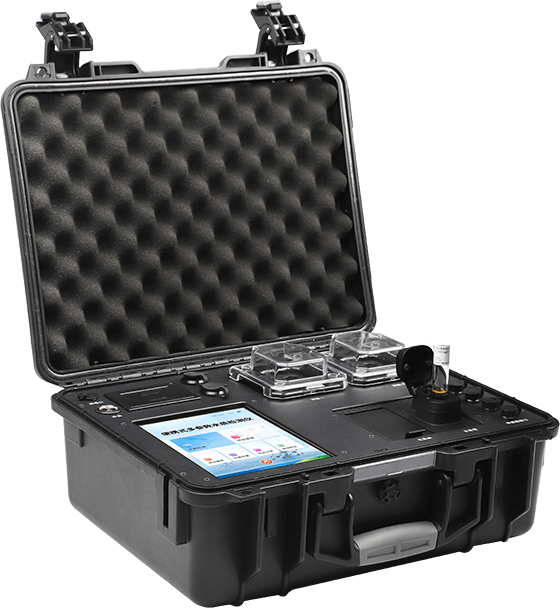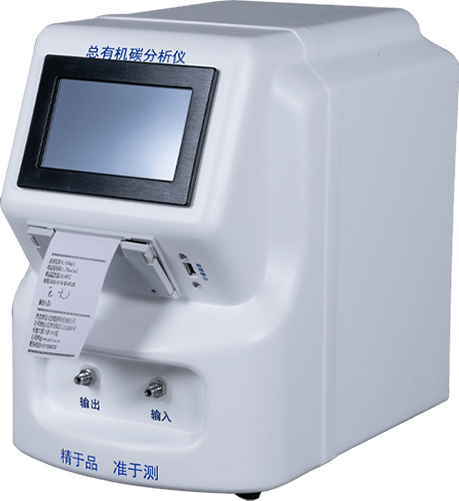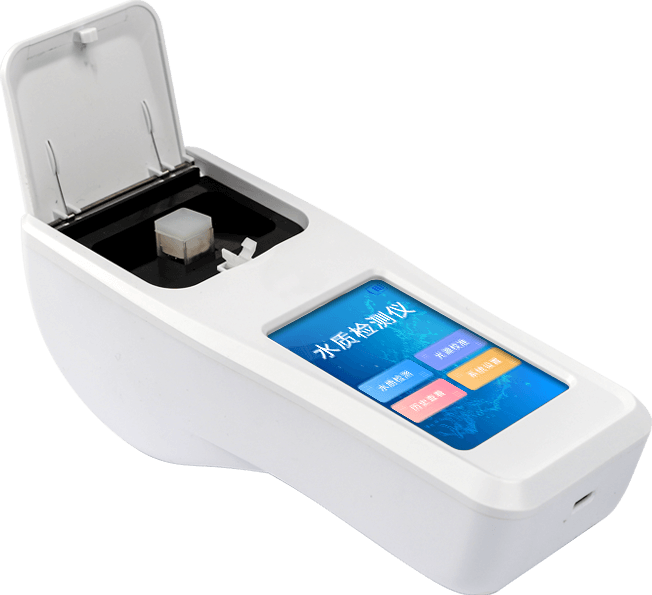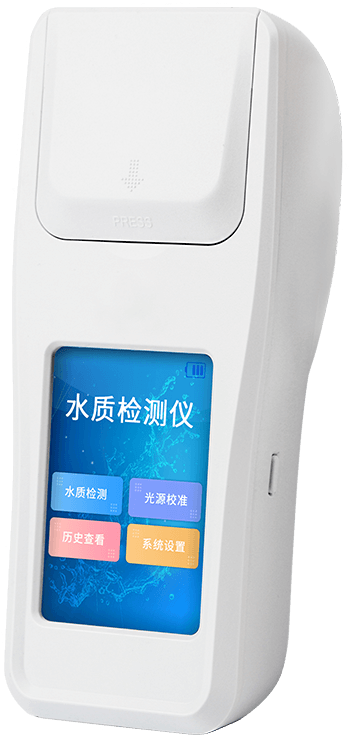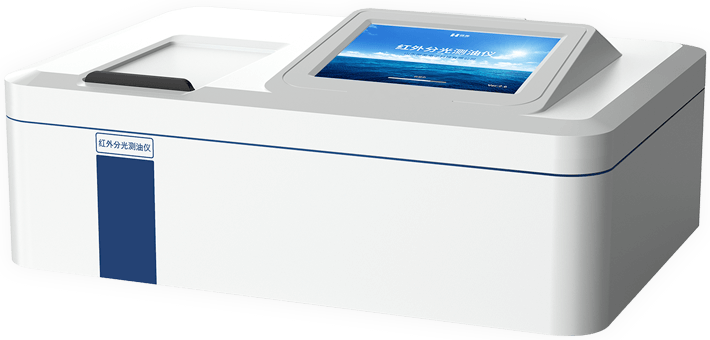
Infrared photometric oil analyzer
- Product Number:LD-CY1
- Product Difference:Specialized infrared spectrometer for measuring oil content in surface water, groundwater, industrial wastewater, soil, exhaust gas from stationary pollution sources, cooking fumes, and oil mist
Product Introduction
The infrared spectrophotometric oil analyzer is developed and manufactured in accordance with Chinese environmental protection standards HJ637-2018 “Determination of Petroleum Hydrocarbons and Animal/Vegetable Oils in Water by Infrared Spectrophotometry,” HJ1051-2019 “Determination of Petroleum Hydrocarbons in Soil by Infrared Spectrophotometry,” and “HJ1077-2019 Determination of Oil Fumes and Oil Mist in Exhaust Gas from Fixed Pollution Sources—Infrared Spectrophotometric Method.” This instrument is a specialized infrared spectroscopic analyzer designed for measuring oil content in surface water, groundwater, industrial wastewater, soil, exhaust gas from fixed pollution sources, oil fumes, and oil mist.
The infrared spectrophotometric oil analyzer can be widely applied in water environment monitoring systems, wastewater treatment plants, water supply companies, petrochemical industries, universities and research institutions, hydrology and water conservancy, metallurgy and steel, biopharmaceuticals, agricultural environmental monitoring, textile dyeing and printing, marine environmental monitoring, papermaking, pharmaceuticals, agricultural technology, and marine transportation sectors.
The infrared oil analyzer complies with the HJ637-2018 standard, using tetrachloroethylene to extract oil substances from water, determining the total extractable substances, then adsorbing the extract with magnesium silicate, removing animal and plant oils, and finally measuring the petroleum content. The concentrations of total extractables and petroleum hydrocarbons are determined by the wavenumbers 2930 cm⁻¹ (stretching vibration of the C-H bond in the CH₂ group), 2960 cm⁻¹ (stretching vibration of the C-H bond in the CH₃ group), and 3030 cm⁻¹ (stretching vibration of the C-H bond in aromatic hydrocarbons) are calculated using the absorbance values A2930, A2960, and A3030. The content of animal and vegetable oils is calculated as the difference between the total extractable substances and the petroleum hydrocarbon content.
Product Features
Complies with standard HJ637-2018, featuring clear infrared three-wavenumber spectra with precise calibration, enabling clear display of absorption spectra and absorbance values generated at three wavenumbers.
Equipped with Android 7.1 smart operating system and built-in dedicated oil analyzer software, integrating spectrum display, scanning, analysis, and calculation functions.
Features a proprietary weak signal conditioning circuit that effectively shields against noise interference, significantly enhancing detection accuracy and detection limits.
The instrument features an 8-inch high-definition color touchscreen for intuitive touch operation, with optional wireless mouse and keyboard support for enhanced convenience.
Supports both calibration coefficient calibration and standard curve calibration. Multiple calibration methods accommodate diverse testing environments, and users may create custom standard curves.
The removable integrated optical system enables a compact instrument size, short optical path, and high energy output. The optical path design aligns with infrared spectroscopy requirements, delivering excellent stability and high signal-to-noise ratio.
The light source boasts a lifespan exceeding 10,000 hours. It employs electrically modulated light source technology to prevent internal overheating that could compromise stability.
One-click software upgrade functionality eliminates the need for on-site engineer downloads. The application can be updated by inserting a USB drive.
Beyond basic features like detection parameter settings, curve analysis, and historical data storage, the instrument enables spectrum zoom functionality. This allows users to infinitely refine spectral details for clearer observation of curves at low concentrations.
Real-time automatic zero adjustment simultaneously captures signals during light emission and extinction, enabling continuous zero-point calibration. This simplifies operation while enhancing long-term signal stability.
High measurement accuracy achieved through a precision 24-bit AD conversion chip, enabling accurate detection of ultra-low signals at the micro-volt level.
Automatic synchronization with network time prevents inaccuracies in output certificate timestamps caused by prolonged instrument use leading to local time drift.
Highly automated program application enables users to perform single-step testing of all instrument functions via the Android system, including automatic wavelength scanning and automatic correction, ensuring more precise data detection.
Employs an electronically modulated light source, reducing heat generation for improved system cooling while simplifying instrument structure and enhancing reliability by eliminating mechanical chopper components.
Features extractant purity detection to prevent erroneous results caused by substandard extractant purity.
Supports Wi-Fi and Bluetooth transmission for wireless data upload to cloud management platforms; enables USB flash drive data copying with plug-and-play functionality without drivers.
Configured with an electronic cloud data management platform for permanent storage of detection results, facilitating long-term and short-term analysis and management support.
Product parameters
| Instrument detection limit | DL ≤ 0.04 mg/L (3 times the standard deviation of 11 blank measurements of tetrachloroethylene) |
| Method detection limit | Detection limit is 0.06 mg/L; when the sample volume is 500 ml and the extraction liquid volume is 50 ml (HJ637-2018 standard) |
| Minimum detection concentration | 0.003 mg/L |
| Sample measurement range | 0–100% oil (concentration and dilution) |
| Basic measurement range | 0.0–800 mg/L |
| Resolution | 0.001 mg/L |
| Repeatability | RSD ≤ 0.6% (11 measurements of oil samples at 30–80 mg/L) |
| Accuracy error | ≤2% |
| Correlation coefficient | r > 0.999 |
| Spectral accuracy | 2 nm |
| Scan speed | Full spectrum scan, fast mode 45 s/scan, Precision mode: 3 minutes per scan |
| Wavenumber range | 3100 cm⁻¹ to 2800 cm⁻¹ (i.e., 3200 nm to 3570 nm) |
| Absorbance range | 0.0000 to 2.0000 AU (i.e., transmittance 100% to 1% T) |
| Wavenumber Accuracy and Repeatability | ±1 cm⁻¹ |
| Operating Temperature and Humidity | Temperature range: 1°C to 40°C, humidity ≤90% |
| Main unit dimensions | 500 mm × 350 mm × 220 mm (length × width × height) |
| Power supply | 100–240 V, (50 ± 1) Hz, 50 VA |

 +86 19353291814
+86 19353291814
 +86 19353291814
+86 19353291814